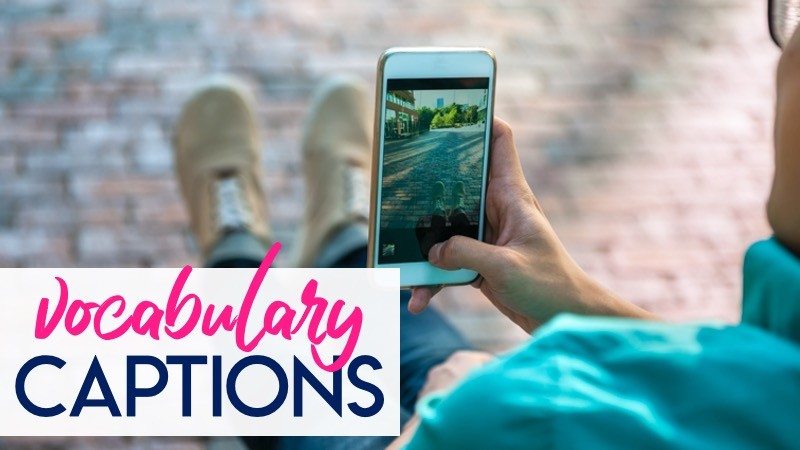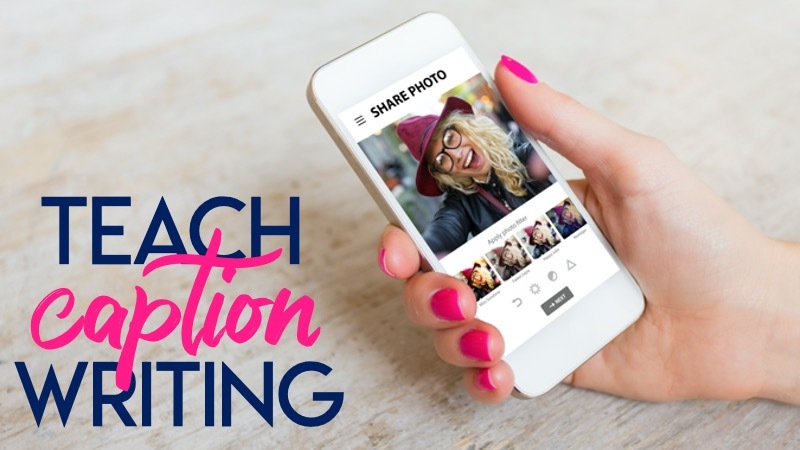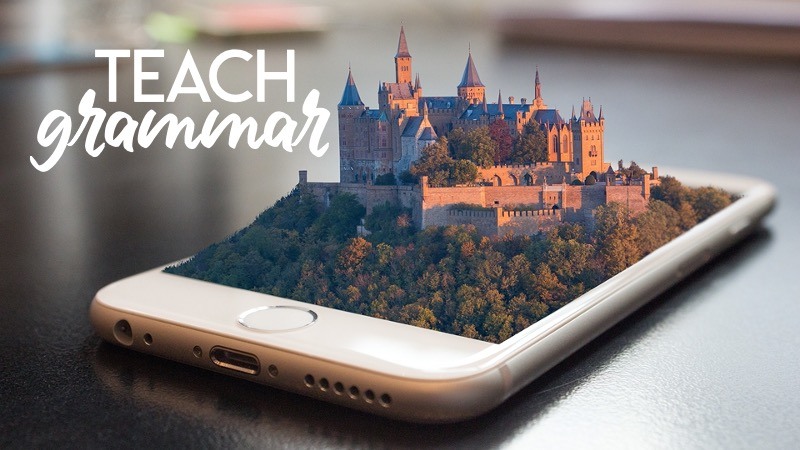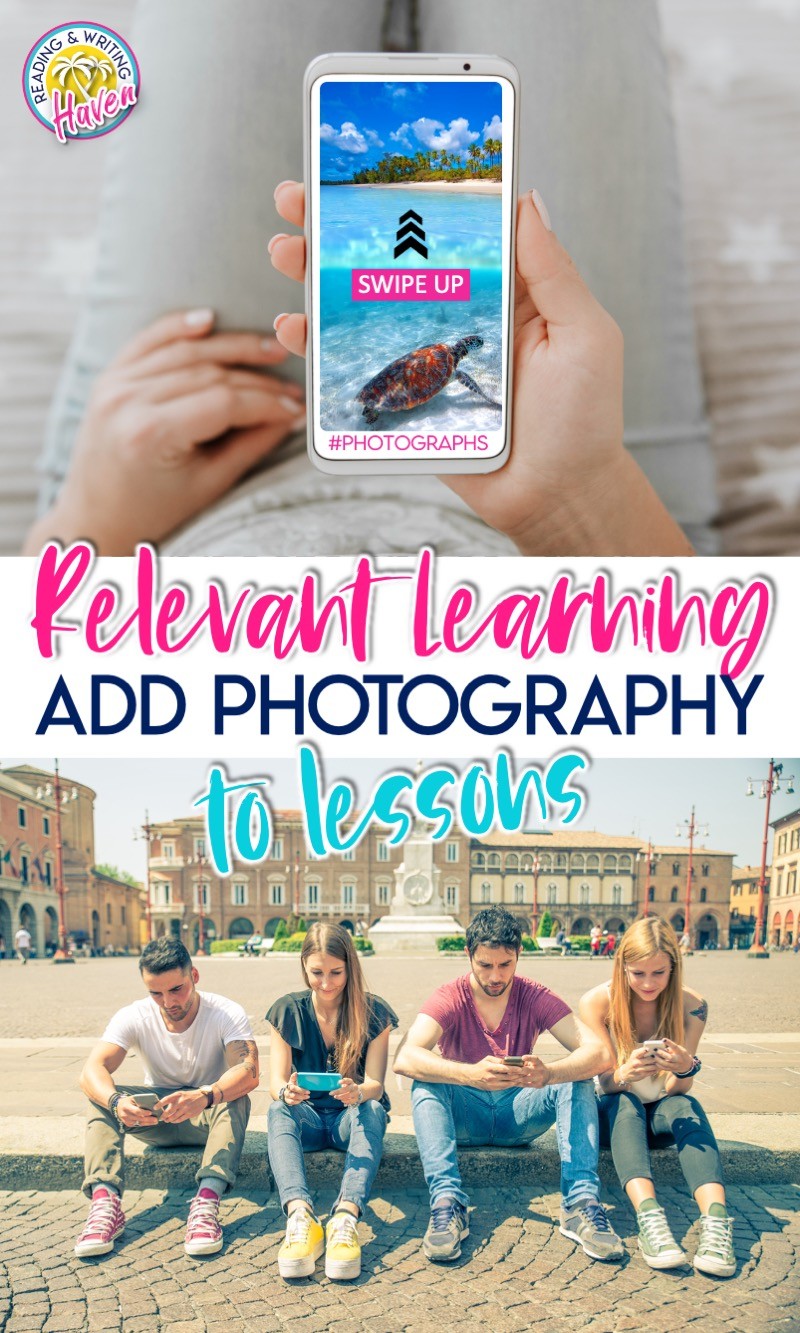7 Ways to Make Learning Relevant with Photography
The new distance learning format has sparked a shift in how educators are connecting with students. Now, more than ever, we need ways to connect with students, build community, and engage them in meaningful learning. In this post, you’ll find seven ways to make learning relevant and strengthen relationships using photography.
“But, is photography even a career worth pursuing? There are so many people who take good photos, and I just don’t know if I would be able to make a living off of it.”
This is a snippet from a conversation I had with a student this year. It broke my heart. This student is creative, gentle, and amazingly kind. To think that he would choose not to pursue a passion of his for fear that there isn’t enough “room” in the world for his talent broke my heart.
This type of moment is what so many of us live for. If our students have a passion, we get behind them and cheer them on! That’s why I was intrigued when We are Teachers contacted me about the app Getty Unshuttered. I had heard of it before, but I hadn’t made time to explore it. After having this talk with my student, however, I saw the need to learn about technology that will help us connect with students…and to help them nurture their talents.
We need to show our students that even if their passion does not involve going to college, they have something special to contribute to the world. The world needs their gifts! Teachers can help students identify their passions by introducing them to things they’ve never tried.
We can teach reading, writing, grammar, and vocabulary by incorporating technology that is relevant to teens’ lives. Photography is a twenty-first century outlet where students can tell their story in their own unique way, which makes it ideal for school clubs, genius hours, and passion projects.
WAYS TO MAKE PHOTOGRAPHY RELEVANT
Photos are relevant to English Language Arts in a myriad of ways. They’re one of my favorite engagement tools. Other than using photography for school clubs and passion projects, this list includes eight suggestions for making it meaningful in the classroom.
1. Teaching Vocabulary
If you follow my blog at all, you know I’m semi obsessed with making vocabulary fun. I don’t just want students to learn new words. I want them to love doing it! Using pictures has always been part of my word nerd game.
Consider…
- Take a photo that personifies this vocabulary word.
- Include relevant hashtags related to this vocabulary word in your caption.
- Create a caption that captures the essence of this word’s connotation.
- In your caption, use this vocabulary word in context.
An important aspect of language acquisition is understanding figurative language. We can ask students to incorporate similes, metaphors, personification, hyperboles, idioms – you name it! – in their comments and photo captions.
2. Teaching Author’s Craft
Authors craft is…well…confusing to students. It’s not easy to define or capture in a bottle. Yet, it’s powerful when students can analyze author’s craft from both a writer’s and reader’s perspective. With photos, we can provide initial scaffolding to help them think critically. Those skills will then transfer to complex texts.
For example, Why did the photographer (perhaps themselves!) choose to take the photo below eye level? Then, in literature… Why did the author choose to present the perspective of the child instead of the adult?
Or, in photography, Why might the photographer have chosen to filter the image in black and white? And, in literature… Why might the author have chosen an editorial to convey the message?
3. Social Media and Digital Citizenship
For students who appreciate the visual aspect of social media, photography is a powerful form of expression. Students can learn all about visual literacy and twenty-first century digital citizenship when using photographs in class.
When students post images online, it’s important for them to learn the concept of a digital footprint and ethical research. What they post can be traced back to them…for a very long time. And, not every photograph floating around on the web belongs to them.
We can teach students about how sharing photographs ethically requires permission from the creator. And, we can teach them the invaluable lesson that, unfortunately, not everyone abides by the laws of digital citizenship. What they post can be saved, altered, and even plagiarized without proper precautions.
4. Teaching Writing
Writing successful social media captions requires a certain writing skill set. We can make learning relevant by asking students to hone their informal writing skills as well as their formal ones. Why not spend some time during a creative writing unit or multi-genre unit studying the intricacies of captions? It’s a genre that isn’t disappearing any time soon.
Students can learn about writing for marketing purposes. What type of language is effective with marketing and photography? Understanding audience and purpose can often be overlooked, but they are key ingredients in this lesson.
And, when writing essays or nontraditional pieces, why not have students add photographs to enhance their message? Photo essays are a unique way to emphasize author’s purpose and text structure. Why has the author included this photo and caption? How does it add value to the content of the writing?
5. Creating a Connected Online Community
When students are separated by space, teachers have to get creative with creating a learning community. For social emotional reasons (and more!), people need to feel close to others. They need to know they can reach out, be reached out to, and are cared about.
Using tech platforms like Padlet, Slides, or Jamboard is one of the many ways we can create large — or niched — learning communities for students who have unique interests. Using a tech tool can be a creative way to do social emotional check-ins with students. Each day, we can post a photo challenge and encourage students to interact with one another’s’ posts.
One of the aspects of distance learning that has been lost during remote learning is clubs and athletics. Our school has made a concerted effort to survey students in order to make learning relevant…we need to hear their voices. One of the results has been connecting students through photography clubs, book clubs, and other areas that students express a common interest in pursuing.
6. Teaching Perspective
We can teach students about empathy and perspective through the use of photos. Whether we are showing them pictures that have already been taken or asking them to snap some of their own, photographs are the perfect illustration of why viewpoint matters.
Students can take photos from underneath an object, over an object, close up, and far away – among other challenges. As students share their photos with peers, they can talk about how something…a spider, perhaps?…may look extremely intimidating up close, but from far away, it’s clearly harmless.
As students read stories and even conduct research, we can transfer this tangible concept of perspective to helping them understand broader concepts, like how point of view impacts a reader’s experience or how bias and rhetoric play a role in persuasion.
7. Teaching Grammar
Why not make learning relevant by using photos to teach grammar? Students can practice titling their images. This skill transcends to studying book and chapter titles as mentor texts so students can create their own unique titles and leads.
Let’s say your dog is sticking his face in yours as you try to stretch on the floor (not that it’s ever happened to me…). If a student were to title an essay “The Time My Dog Stuck His Face in Mine” or “Dog,” we might be slightly underwhelmed. But, if we have a picture of what it looks like to have a dog sticking his face in ours, we might be able to get more creative…
- Dog Breath Strikes Again
- How to Avoid Drool Face
- When All you See is a Muzzle
The visual nature of a photograph can inspire us to write creatively and inspirationally. If we combine the power of the photograph with mentor titles from popular young adult literature, we may just awaken the inner voices of our writers.
Photographs are a bridge to relevant learning…in so many ways.
Regardless of what photography-based lessons you choose as inspiration for learning, students will not be disappointed. They can use it to tell their stories, to discover their passions, and to stay connected.
Make learning relevant by incorporating photographs, and you won’t go wrong.





